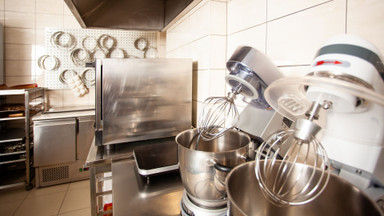Dec 3rd 2020
The Differences Between Planetary and Spiral Mixers
When selecting a mixer for a commercial kitchen, you must consider space, but you should also think about the type and volume of breads, pastries, muffins, cookies, or pizza dough you will produce. The differences between planetary and spiral mixers include how they operate and what types of food they can help prepare.
Planetary Mixers
Planetary mixers have a fixed, non-moving bowl, with the beater, paddle, or dough hook circling their way around. Powered by a single motor, the utensil revolves around the bowl, similar to planets in the solar system revolving around the sun; hence the name “planetary” mixer. These mixers can rest on countertops, stands, or the floor.
Many planetary mixers are quite versatile. With the proper attachments, they not only mix dough, but slice veggies, grate cheese, or chop meat. Planetary mixers can prepare meringue, batter, frosting, and cookie dough. They can even create sauces and mashed potatoes.
For maximum versatility, you can use various agitators like paddles, dough hooks, whisks, and pastry knives in the bowl. Add-ons like slicers, shredders, and graters typically come as hub attachments. The size of a planetary mixer is measured in volume, ranging from just a few quarts up to 140.
Spiral Mixers
A spiral mixer has two motors: one rotates the bowl, while the other moves the agitator. Spiral mixers are best suited for dough, and they are great for bakeries and pizzerias. They produce artisan breads and bagels, as well as dough for pizza crusts.
Temperature, water absorption, and oxygenation are critical to the proper preparation of dough. A spiral mixer is a great choice if the kitchen mainly concentrates on producing breads and pizza crusts. The dual action of the dough hook and bowl ensures a thoroughly mixed batch of dough with the proper gluten structure.
Spiral mixers are also easier on the dough while mixing, and powerful enough to handle dense dough. Though spiral mixers are generally large and sit on the floor, they can produce small batches.
Spiral mixers range in capacity from around 30 quarts to 350 quarts. If you don’t need attachments that slice, chop, or grate, but you want a mixer that can handle dense or delicate dough, buy a spiral mixer.
The differences between planetary and spiral mixers are based on the type of food the kitchen produces, the available space, and versatility. Kitchens that go beyond dough and baked goods should select planetary mixers, while those that concentrate on breads, bagels, and pizza crust dough will do well with a spiral mixer.

